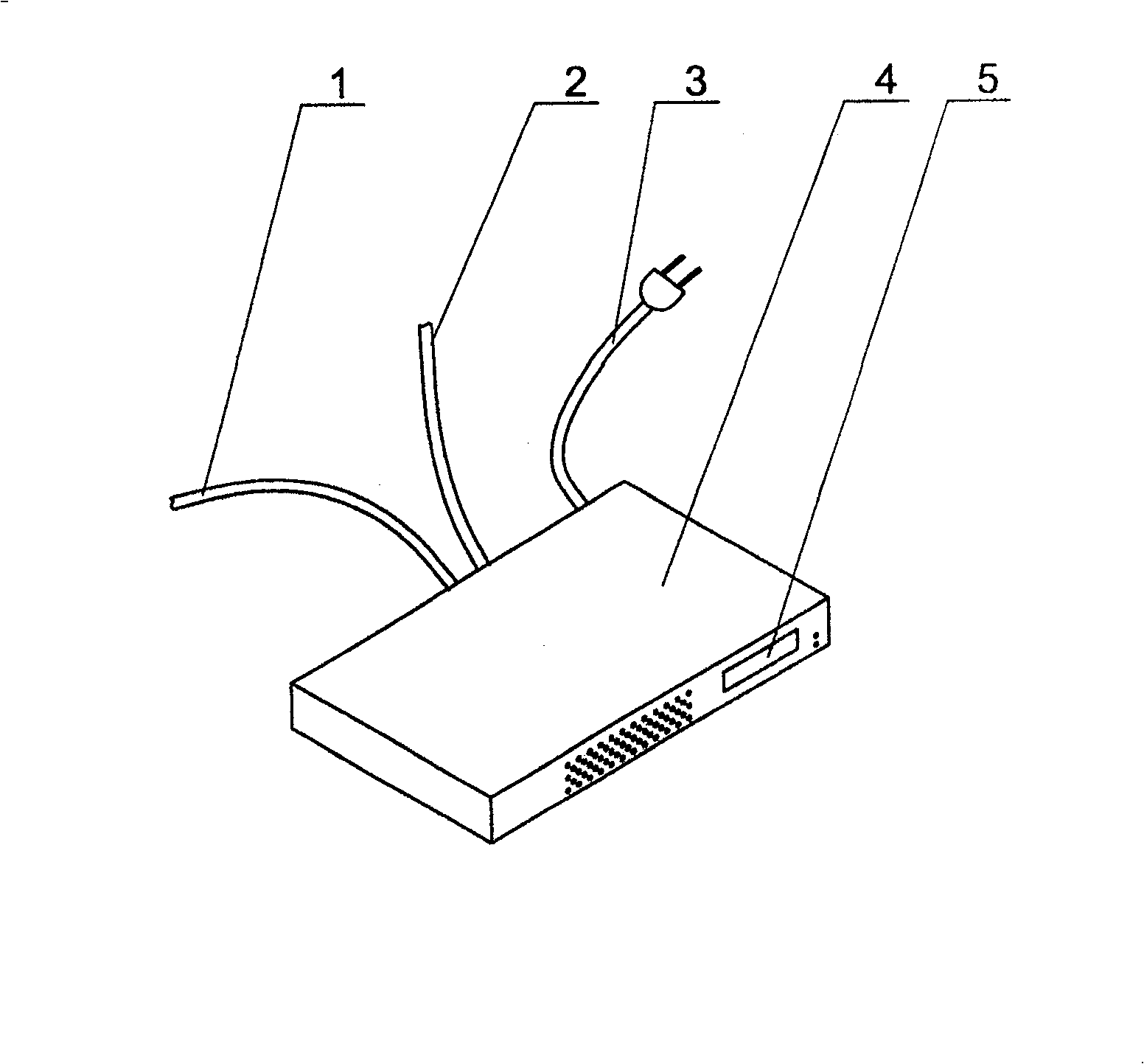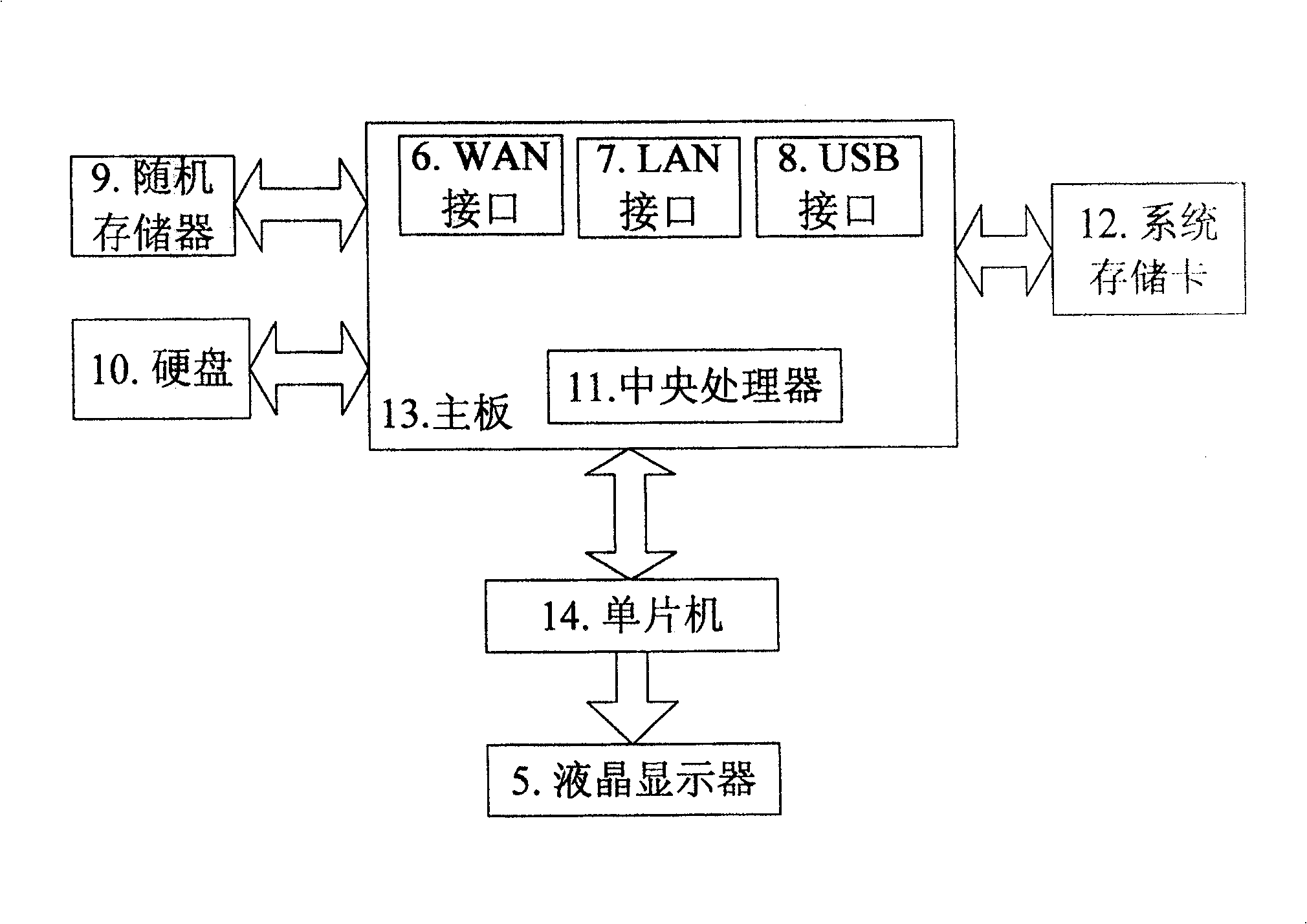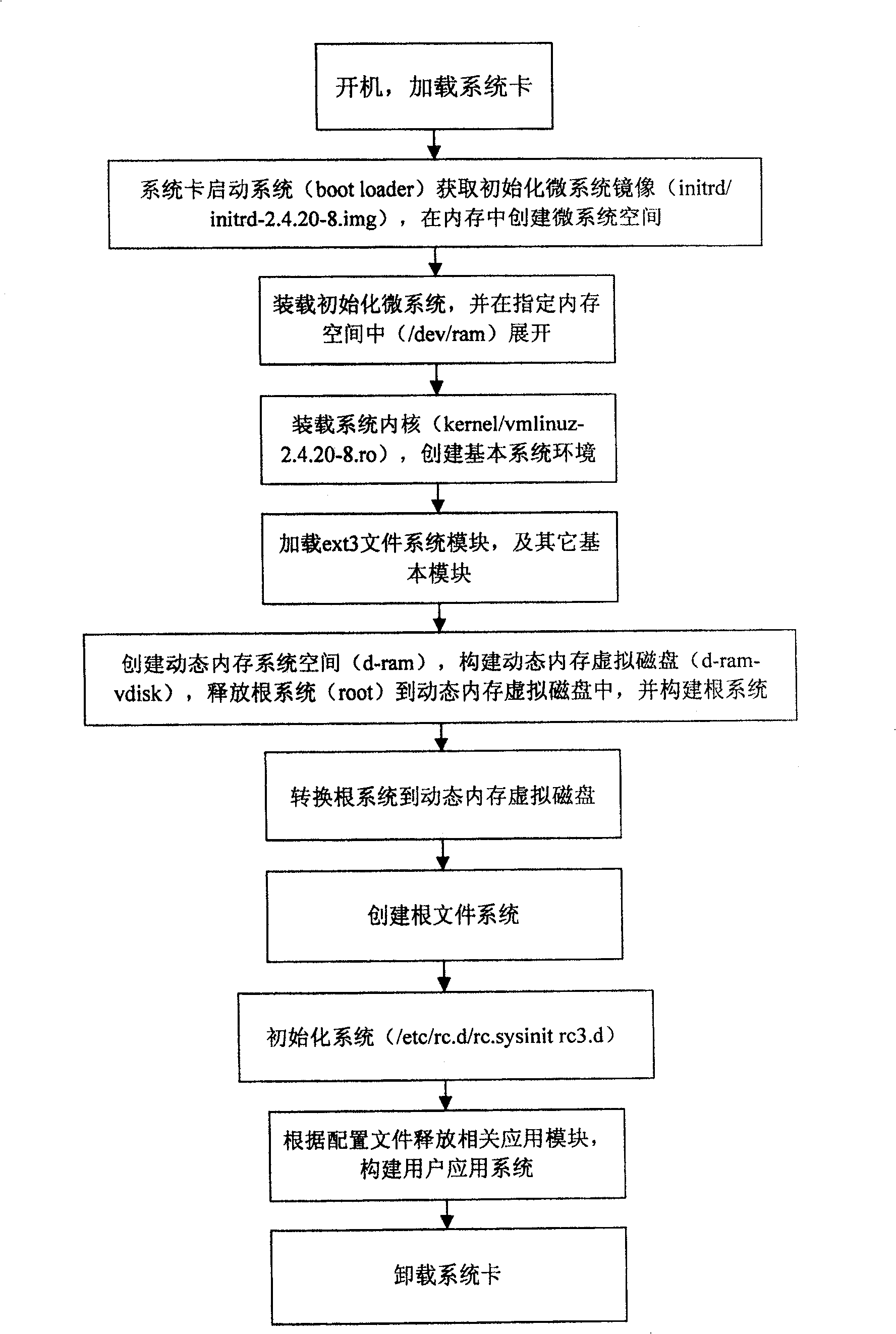Multifunctional network application equipment and starting and online updating method
A network application, multi-functional technology, applied in the direction of data exchange network, data exchange through path configuration, digital transmission system, etc., can solve the problems of complex server, unable to provide a variety of basic applications, and troublesome to use, and achieve simple external interface. , Eliminate the effect of post-maintenance work and high investment
- Summary
- Abstract
- Description
- Claims
- Application Information
AI Technical Summary
Problems solved by technology
Method used
Image
Examples
Embodiment 1
[0055] figure 1 , figure 2 It is a schematic diagram and functional block diagram of multi-functional network equipment. The serial numbers in the figure indicate: 1. WAN line, 2. LAN line, 3. Power line, 4. Multi-functional network application equipment, 5. Liquid crystal display module, 6.WAN interface, 7.LAN interface, 8.USB interface, 9. Random access memory, 10. Hard disk, 11. Central processing unit, 12. System memory card, 13. Main board, 14. Single-chip microcomputer.
[0056] Such as figure 1 As shown, this embodiment is very simple from the outside, usually only WAN line 1, LAN line 2 and power line 3 are connected to the outside world, which is equivalent to general network equipment. WAN cable 1 and LAN cable 2 are universal crystal connectors, which are easy to connect and operate. The liquid crystal display module used in this embodiment is a low-cost monochrome multi-line dot matrix LCD, and the displayed information is sufficient for this embodiment.
[00...
Embodiment 2
[0064] What this embodiment describes is a method for starting a multifunctional network application device. The multifunctional network application equipment uses an industrial computer-style embedded computer system, which is close to a general-purpose PC system, and uses a disk service model. That is, the root location of the system files is always in the disk during the running process. The disk is an important part of the computer running and cannot be separated from other parts of the computer during running. The startup method described in this embodiment is a brand-new startup mode for embedded systems, which abandons the disk service mode commonly used in traditional embedded systems, and transfers the root location of the dedicated device operation file from the conventional disk to the random access memory In the RAM, the tasks of loading device running files, building the original directory structure of device running files, and assigning user rights are completed ...
Embodiment 3
[0080] What this embodiment describes is an online upgrade method for a multifunctional network application device.
[0081] The device operation files of traditional embedded systems are stored in the form of several files, and the storage and operation are interoperable in the same storage space. During the operation of the device operation files, most of the storage files are in the exclusive form. The upgrade system is complicated, and it is necessary to fully consider the dependency relationship and running status between the device's running files. A little carelessness will cause the device's running files to crash. Therefore, the embedded system basically does not have an online upgrade function. The storage structure of traditional embedded systems such as Figure 4 Shown:
[0082] 1. Boot partition, system boot program storage area;
[0083] 2. System partition, storing the system kernel and system files;
[0084] 3. Application partition, storing all application ...
PUM
 Login to View More
Login to View More Abstract
Description
Claims
Application Information
 Login to View More
Login to View More - R&D
- Intellectual Property
- Life Sciences
- Materials
- Tech Scout
- Unparalleled Data Quality
- Higher Quality Content
- 60% Fewer Hallucinations
Browse by: Latest US Patents, China's latest patents, Technical Efficacy Thesaurus, Application Domain, Technology Topic, Popular Technical Reports.
© 2025 PatSnap. All rights reserved.Legal|Privacy policy|Modern Slavery Act Transparency Statement|Sitemap|About US| Contact US: help@patsnap.com



